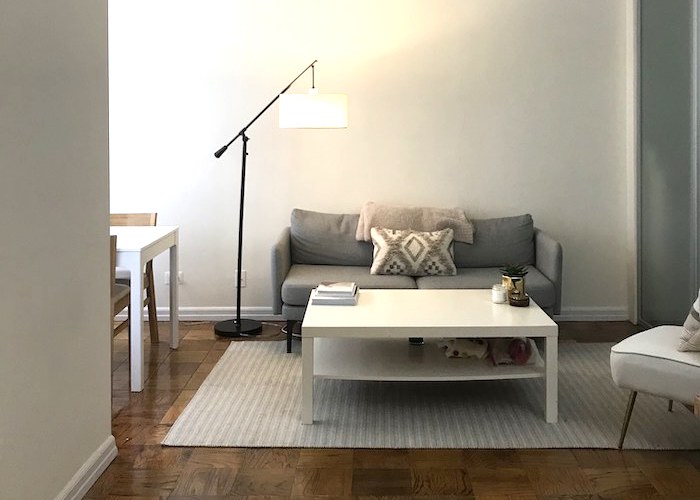How To Tell If You're Taking Care Of Yourself, Or Just Splurging Mindlessly

Last month, I was on my couch feeling a little overwhelmed with life.
Before I knew it, I was on Groupon, credit card in hand, rationalizing the purchase of a chocolate mask facial, a teeth whitening session, and a 60-minute body scrub with exotic oils. Within a matter of minutes and a few clicks, I dropped nearly $200 on what I wanted to call self-care, which has equated spending on beauty, grooming, and other appearance-based services as evidence of truly taking care of myself.
What Might Auntie Audre Say About Self-Care?
Audre Lorde, my feminist auntie, is known for saying “Caring for myself is not self-indulgence, it is self-preservation, and that is an act of political warfare.” This quote seems to be everywhere on social media. It’s on Instagram or Twitter as memes to encourage women to slow down, attend to their mental and physical health, and maintain a centered mind, especially in times of social.
While I’ll never know for sure, I believe that the type of self-care Lorde advocated was more aligned with the self-care advice therapists would offer, not marketers. Lorde, a black lesbian feminist poet, understood that the world marginalized her and people like her and used self-care — the attention to self — as a strategy to pull misunderstood and overlooked communities from the psychic margins of society, back to the center, at least in their own lives.
What Could Self-Care Look Like
According to GoodTherapy.org, self-care from a clinical perspective is, “the actions that an individual might take in order to reach optimal physical and mental health.” These actions vary, but they urge patients to take care of the activities of daily living, or ADLs, such as eating properly, bathing, wearing clean clothes, and other hygiene basics. But it also includes physical self-care, which includes planning for exercise and sufficient rest.
And finally, self-care includes an individual’s ability to attain and maintain emotional wellness, which can be obtained through meditation, journaling, conversing with a friend or a visiting a counselor.
With the exception of seeking therapy, the cost of self-care is virtually nothing.
The difference in the cost of self-care from a business perspective and mental perspective boils down to motivation. Therapists’ motives for suggesting an activity are for the client’s emotional and mental well-being and warding off illnesses or hospitalization. Ideally, the therapist-patient relationship is supposed to be short-lived and short-term. On the other hand, companies need repeat and loyal customers for their businesses to thrive.
The Irony in Financially Troublesome Self-Care Practices
The ultimate goal of self-care is peace of mind, a boosted self-esteem, and lowered anxiety. So, going into long-term debt to achieve short-term or short-lived effects of pedicures or a “boozy” brunch with girlfriends is the antithesis of self-care in the first place.
Technically speaking, these expensive forms of self-care whittle away at your ability to secure a solid financial future, which is a surer strategy to self-care and steady temperament than any wax, peel, or massage could give.
Alternatives to High-End, High-Cost Self-Care
There’s nothing wrong with a self-care splurge every now and again. But it’s definitely not a measure of how well you treat yourself or take care of yourself. Identifying activities and practices that make your self-care plan effective and sustainable are.
Here are some other ways that you can engage in self-care that are functional, fun, and financially smart.
1. Declutter your home, office, car, and inbox.
2. Outsource home projects that buy you back time and peace of mind: Instead of doing laundry, mowing the lawn, or painting the den, perhaps self-care comes in realizing that just because you can, doesn’t mean that you should.
3. “Brown-out” or black out social media: Self-care also comes in the form of eliminating emotional and psychological distractions or exposing yourself to images that engender jealous, envy, inadequacy, or other negative emotions unnecessarily.
4. DIY beauty routines: If you know your mood improves with a beauty lift, consider saving your coins and doing it yourself.
5. Color: Adult coloring books are excellent tools to allow your creative side to take the fore and be playful.
6. Take a shower.
7. Text a girlfriend and tell her something funny, inspiring, or foolish.
8. Watch a TED Talk or a video with kittens.
9. Sit with the emotion and honor it. Sometimes the best thing we can do to make us feel better is to recognize and own the feelings that we are having in the moment.
*****
It’s been four weeks since my Groupon frenzy and I’ve used only one of my four self-care deals. Only one. In hindsight, I guess I really didn’t to spend $200 to engage in self-care. In the future, I’ll keep this money and emotion lesson in mind. It will spare my spirit and my savings accounts unnecessary stress.
Kara is the founder of the award-winning site The Frugal Feminista and author of three powerful personal finance and personal development resources for brown girls worldwide: Heal Your Relationship with Money: A Self-Care Workbook, Unmasking The Strong Black Woman, and The Wealthy Woman’s Blueprint Financial Planner.
Image via Unsplash




